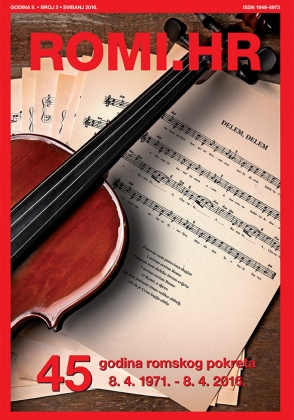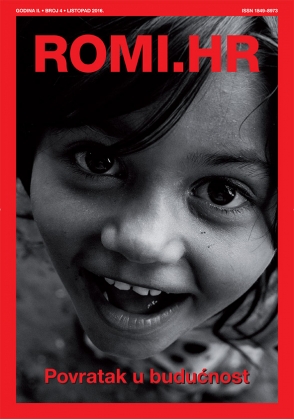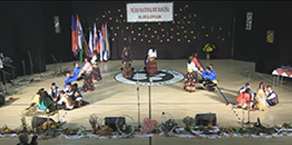Features ROMI.HR
/Manele is a genre of music that originated in Romania and is present in the Balkans, especially in Moldova and Romania. Manele music is characterized by its blend of traditional Roma music with modern pop, dance, and electronic elements.
Manele is frequently perceived as a genre that exists outside the traditional or "respectable" cultural norms of Romania. Despite its appeal, particularly to younger and working-class listeners, Manele is often related to specialized markets or an underground scene. This is partly due to the genre's controversial themes and the cultural prejudices surrounding it.
Origins
Manele music originated in the late 1970s and early 1980s in Romania. The genre has origins in traditional party music, called “mahala music” or “lautareasca” music – the original Manele, featuring large bands of Roma musicians playing lute and brass instruments, which started in the late 18th century. Then some of lautareasca performers started to sing the music learned from their ancestors in a much different way and generally using modern (electronic) instruments and beats. Later it began blending traditional Balkan folk music with Turkish, Arabic, and lately Latino and Reggaeton beats.
During the communism era in Romania, the Roma community was not officially recognized as a minority group, because Romania’s communist government aimed to establish a single, unite nationalist-socialist culture rather than promote multiculturalism. As a result, both the lautareasca and the more contemporary Manele were prohibited but were still performed underground. After collapse of Communism the genre gained significant popularity in the 1990s. In the early 2000s, Manele music was present all over Romania.
Manele embraced the local context and addressed the socio-economic challenges faced by Romanians during that time. Adrian Schiop, a Romanian author who wrote a book on the genre, argues that Manele resonated with listeners because, like hip hop, it directly confronted the pressures of the era. This period of political and social upheaval provided ground for Manele to flourish, as it resonated with the aspirations and struggles of a society. The music's themes of love, heartbreak, wealth, and social status resonated with many, making it a staple in weddings, parties and other celebrations. Manele singers were frequently featured on the radio and invited to TV shows.
The typical characteristics of Manele music are fusion of Balkan music influence, mix of traditional Roma music instruments such as the accordion, violin, cimbalom and modern instruments and highly expressive vocals. The lyrics are repetitive and have good rhythm; often explore themes of love, relationships, betrayal, social status, presence of enemies, wealth and superiority of the singer over their enemies, and other personal achievements.
Controversies and criticisms
Despite its popularity, Manele music has not been without controversy. During its peak in the 2000s, the cultural elite often looked down upon the genre. This was partly due to the values embraced by Manele singers. Critics often accuse the genre of its questionable content that promotes materialism, misogyny, and a hedonistic lifestyle. The flashy performances, lavish music videos, and lyrics glorifying wealth and luxury have led some to view Manele as a symbol of excess and moral decay. It also been accused of glamourisation of the criminal underworld. The genre's lyrics often appear to celebrate activities that are at the edges of legality.
Additionally, some Manele artists used to accept commissions to write songs about wealthy and influential, but questionable figures, that also doesn’t add any appeal to this genre. For example, Adrian Minune’s 2014 song “Sydonia” was commissioned by controversial businessman Fabian Marin for his wife, Sydonia Marin, while she was in prison for trying to bribe a judge with €45,000 and a luxury car. Moreover, Manele's association with the Roma community has subjected it to societal prejudices.
In many Eastern European countries, the Roma people face widespread discrimination, and cultural expressions of Roma, including Manele, are often marginalized. The political landscape in Romania and the Balkans has also played a role in the marginalization of Manele. Under communist regimes, Manele and other forms of ethnic music were often suppressed or banned, seen as threats to the homogenous national culture that these governments tried to promote. Although communism has fallen, the lingering effects of these policies continue to influence how Manele is perceived and treated.
All the above mentioned reasons has led to efforts to ban or restrict Manele in certain contexts, further marginalizing the genre and its artists. Nowadays, Manele music has limited airplay on radio or TV station; it is not played in public transportation vehicles, most bars and restaurants throughout the countries.
Global influence
Many of the most popular Manele artists, such as Florin Salam, Nicolae Guță, Vali Vijelie, Sandu Ciorba, Tzanca Uraganu, Costel Biju, and DeSanto, are Roma and have become cultural icons within the Roma community. They often draw on their own experiences and cultural heritage to create music that resonates with their audience. Manele music has provided a platform for Roma artists to express themselves and celebrate Roma identity, while also facing criticism and controversy due to its perceived negative stereotypes and association with social issues such as crime and poverty.
It is important to note that not all Manele music is created by or for the Roma community, and the genre has also gained popularity among non-Roma audiences. However, the strong connection between Manele music and the Roma people remains a significant aspect of its cultural significance.
In recent years, Manele has begun to transcend its regional roots, attracting a global audience. The internet and social media have played a crucial role in this expansion, allowing artists to reach listeners far beyond the Balkans. Collaborations with international musicians and the incorporation of global musical trends have also helped Manele evolve and gain acceptance in diverse cultural contexts.
While Manele certainly is a controversial genre, let it not to be a subject to generalization. It is important to understand that Manele is a rich blend of different cultural influences that was evolving throughout centuries and left an immense mark in history and people’s lives.
 Back to Features
Back to Features













